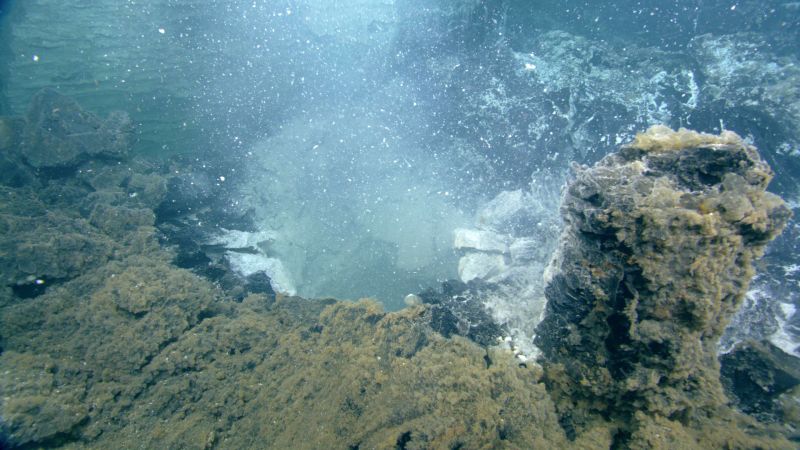In recent months, scientists have observed significant geological activity occurring in the waters off the coast of Oregon, particularly surrounding a large undersea volcano known as Axial Seamount. This volcano, situated nearly one mile (approximately 1.4 kilometers) beneath the ocean’s surface, sits atop one of Earth’s geological hot spots, where magma from the mantle is pushed upwards into the crust. This phenomenon is characteristic of hotspot volcanoes typically found on the ocean floor. Additionally, Axial Seamount is perched on the Juan de Fuca Ridge, a tectonic boundary where the Pacific and Juan de Fuca plates continuously diverge, leading to an accumulation of pressure just below the surface.
Recently, the undersea volcano has exhibited indications that an eruption may be imminent. According to experts from the National Science Foundation’s Ocean Observatories Initiative, an extraordinary increase in seismic activity has been detected. The volcano has been inflating with more magma, leading to a dramatic uptick in earthquake frequency that suggests a volcanic eruption could occur soon. William Wilcock, a marine geophysicist from the University of Washington, reported that the site is currently experiencing several hundred small earthquakes each day; while this is considerably less than what was recorded before the last eruption in April 2015, it remains noteworthy.
Wilcock estimates that the volcano may erupt soon, possibly within this year or early 2026, explaining that the precise timing is still highly unpredictable. Looking back at the last eruption, scientists documented around 10,000 small-scale earthquakes in a 24-hour window, and similar seismic activity can be expected for the upcoming event. During the eruption in 2015, magma flowed from Axial Seamount, creating a lava trail that extended approximately 25 miles (40 kilometers) across the ocean floor. The magma chamber itself has a history of collapse, resulting in the formation of a caldera that fosters an incredible diversity of life supported by mineral-rich gases propelled from hydrothermal vents.
Debbie Kelley, director of the Regional Cabled Array and a professor of marine geology, emphasized the resilience of life associated with these hydrothermal ecosystems. Following previous eruptions, marine organisms in the area bounced back remarkably quickly, thriving in age-old environments that are constantly renewed by volcanic activity. Kelley noted that while neighboring marine life might perceive the undersea activity through temperature changes and vibrations, they are not at risk of harm from the impending eruption, which is expected to be mild and largely submerged. The eruption will not unleash ash clouds or significant visual disturbances above the water’s surface.
Touted as a notable research environment, the Axial Seamount area offers an excellent opportunity for scientific observation. Kelley mentioned that the facility plans to livestream the next eruption, marking a historic first for such an event. The challenges of observing undersea volcanoes are substantial; for instance, researchers witnessed an eruption for the first time in April 2023 during a submersible dive off the coast of Costa Rica at the East Pacific Rise.
Extraordinarily, recent studies suggest that the timing of eruptions at Axial Seamount might not only depend on geological conditions below the surface, but also on astronomical factors above it. Historical data reveal that the last three eruptions occurred between January and April, coinciding with Earth’s shift away from the sun. Wilcock proposed that gravitational forces exerted by the moon may influence volcanic activity, as the changing tides create pressure fluctuations on the seafloor, potentially stressing the magma chamber enough to prompt an eruption.
In conclusion, the anticipation surrounding Axial Seamount underscores the complex relationship that exists between geological activity beneath the Earth’s crust and broader environmental influences above. With scientists closely monitoring the situation, the impending eruption could provide significant insights into the dynamics of underwater volcanoes and their ecological significance in sustaining life in the deep ocean. The ramifications of these undersea phenomena highlight both the resilience of marine ecosystems and the need for continued research into volcanic activity, which play an essential role in shaping the planet’s surface and fostering unique forms of life.



